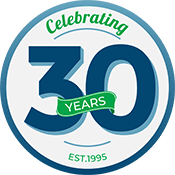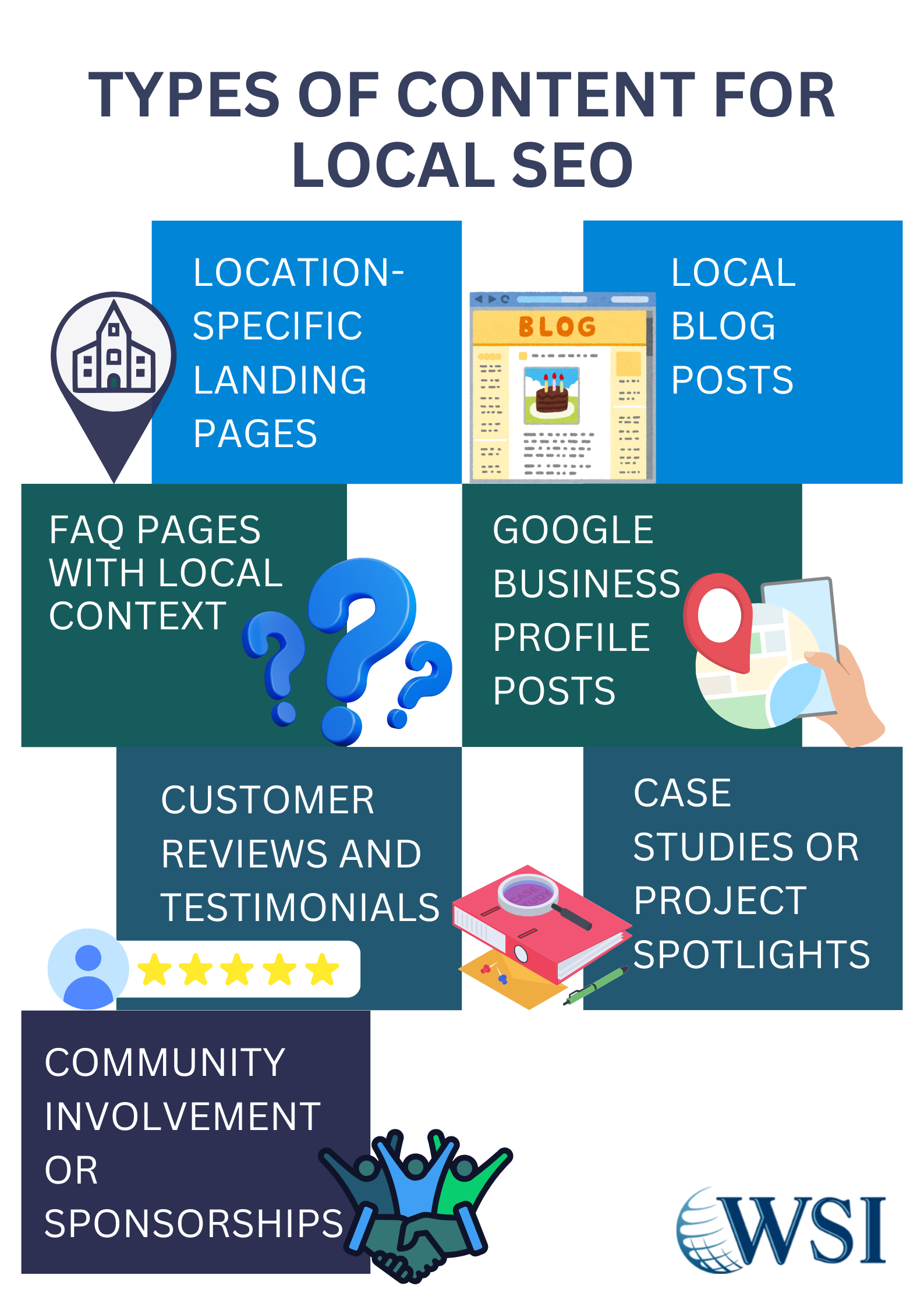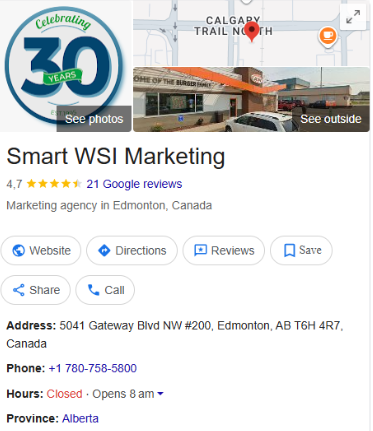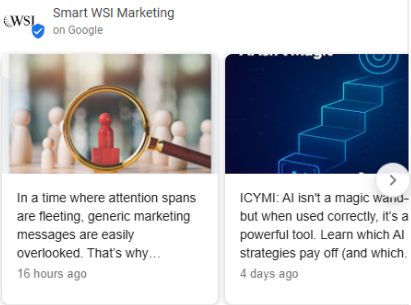
 STRATEGY CALL
STRATEGY CALLUpdated May 8, '21; Nov 6, '24

Publishing relevant, useful content for your readers is essential to improving your website’s local SEO results. Content like FAQs, manuals,
blog posts, and articles all work together to increase rankings, traffic, and leads. Smart WSI Marketing is an Edmonton SEO company that
effectively utilizes content marketing for local SEO that supports your campaigns.
Local content marketing is the practice of creating content that speaks directly to a specific geographic area, typically the community your
business serves. It’s about crafting valuable, relevant information that not only addresses your customers’ needs but also
reflects the unique characteristics of your local community.
For example, a landscaping company in Edmonton might publish blog posts about local events like “Spring Yard Prep in Alberta” or share social media tips for winter lawn care specific to prairie climates. This type of localized content builds trust with local audiences by showing you understand their environment, concerns, and preferences.
When combined with local search engine optimization tactics, like optimizing for location-based keywords and updating your Google Business Profile, local content marketing helps your business show up in search engine results made by people nearby who are ready to buy.
It’s more than just adding your city name to a blog post. Done right, local content marketing positions your business as a knowledgeable, reliable part of the local community and gives you a competitive edge in attracting high-intent, small businesses and customers.
Customers search for local businesses every day. If you want to attract these searchers to your store or eCommerce website, you need to employ search engine optimization (SEO) techniques that make it easier for them to find you. Content marketing offers a terrific opportunity for your local business to compete.
To understand how SEO and content marketing make a formidable team, it’s important to know what each does individually:
Your website couldn’t exist without the written word (content). SEO is how you make that content deliver more qualified leads who are also
more likely to convert.
Local SEO matters because your potential customers are searching for businesses like yours close to home, and often, they’re ready to
make a purchase. Whether it’s someone looking for a “coffee shop near me” or a homeowner searching for “plumbers in
Edmonton,” local SEO helps your business show up when and where it counts.
Unlike traditional SEO, which targets broader audiences, local SEO is focused on improving your visibility in local search results, Google Maps, and business listings. It helps your company stand out in your community by highlighting your location, services, and customer reviews.
When your business is optimised for local search, you increase your chances of appearing in the “local pack” (the map and listings that show up at the top of Google search results). That visibility can translate directly into more foot traffic, phone calls, and online inquiries.
In short, local SEO makes it easier for nearby customers to find you and choose you over the competition. It’s an essential strategy for any business that depends on local clientele.
As any SEO expert will tell you, creating great content isn’t easy. Here are some of our SEO agency’s favourite ways to optimize your content marketing for local search.
No matter which content you’re creating, the key to making it work for your local SEO strategy is to share only relevant and helpful
information that your customers can use. It may be keywords and phrases that bring them to your website,
but it’s what you offer them once they arrive that will keep them there.
Creating locally relevant content signals to search engines (and customers) that your business is active, credible, and in touch with the community. Here are some effective content types that support local SEO:

If you serve multiple cities or neighbourhoods, dedicated pages for each area help search engines match your business with local intent.
These pages can include services offered, customer testimonials from the area, and locally relevant keywords.
Write about topics your community cares about, local events, seasonal trends, or neighbourhood-specific tips. For example, a real estate
agent might blog about “Top Family-Friendly Neighbourhoods in South Edmonton.”
Including location-specific questions like “Do you offer HVAC repair in Sherwood Park?” can help you rank for local voice searches and
improve your relevance in search queries.
Publishing updates, offers, or events on your GBP helps keep your listing active and visible. These short posts show up in search and map
results, giving local customers a quick way to engage with your business.
Featuring local reviews on your site adds trust and relevance. Bonus: When customers mention the city or neighbourhood in their review, it
can boost your local SEO naturally.
Showcasing work you’ve done for local clients helps build authority and gives potential customers in the same area a reason to trust you.
If your business supports local charities, teams, or events, highlight that on your website. It reinforces your community ties and adds
content that search engines associate with local relevance.
Building a strong local SEO content strategy isn’t just about stuffing city names into blog posts. It’s about being intentional with what
you create, who you create it for, and how that content supports your business goals. Here are some foundational best practices to guide
your local SEO content planning:
Use tools like Google Keyword Planner, Ahrefs, or Ubersuggest to identify search terms your local audience is using. Think beyond just
“[service] + [city]” and look for longer-tail queries like “best roofing company in West Edmonton” or “24-hour locksmith near me.”
If you serve multiple locations, don’t copy-paste the same content across different pages. Each location page should feature unique details:
local team bios, service area maps, nearby landmarks, and testimonials from customers in that specific area.
While SEO matters, don’t forget your audience. Content should be clear, helpful, and relevant to their local needs. Write naturally, answer
real questions, and avoid keyword stuffing.
Your content strategy shouldn’t stop at your website. Keep your GBP updated with fresh posts, FAQs, services, and photos. These assets not
only appear in local search results, but they also often influence buyer decisions.
LocalBusiness schema and review markup help search engines better understand your content. This can improve how your business appears in
local search features like rich snippets or map packs.
Don’t let your location pages or blog posts sit in isolation. Link to them from your homepage, service pages, or blog articles where
relevant. This boosts SEO and helps users navigate your site more easily.
Publishing posts that answer location-specific questions (e.g., “When to aerate your lawn in Edmonton”) positions your business as a local
authority. These blog posts also have long-term SEO value as evergreen content.
Use Google Analytics and Search Console to monitor how your content is performing by region. Pay attention to organic traffic, time on page,
and bounce rates from users in your target locations.
Your Google Business Profile (formerly Google My Business) is one of the most critical tools for local visibility. It connects your business
with nearby searchers on Google Search and Maps, especially those ready to take action. Here’s how to optimise it effectively:

Google rewards completeness. Fill in your business name, address, phone number (NAP), business category, hours, website URL, and attributes
(like “wheelchair accessible” or “women-owned”). Consistency across your website and other directories is also key.
Your business category tells Google what you do. Be specific: choose “Family Law Attorney” over just “Lawyer.” You can add secondary
categories to reflect additional services, but don’t go overboard; only include what’s relevant.
Use this section to explain what makes your business unique briefly. Mention your services, local service areas, and any standout features,
but avoid promotional language or keyword stuffing.
Visuals improve engagement and credibility. Upload recent photos of your location, team, products, or completed work. Businesses with photos
get more clicks, calls, and direction requests than those without.

GBP Posts function like mini social updates. Promote seasonal specials, blog content, events, or service highlights. These posts appear
directly in search results, so they’re a valuable visibility tool.
Customer reviews influence rankings and trust. Ask satisfied clients to leave reviews, and respond to all reviews, good or bad, with
professionalism and authenticity. Use your local keywords naturally in responses when relevant.
Google Business Profile has an option to ask for reviews. This works by providing a unique URL/QR code that you can share with customers:

Monitor and respond to questions asked by potential customers. You can also proactively post common questions and answers. This not only
informs users but also helps control the narrative around your services.
Allowing customers to message you directly through your profile can boost engagement and lead generation. Just be sure you can respond
quickly; Google monitors response times.
List your services or products within the GBP dashboard, complete with descriptions and (if applicable) prices. This helps searchers
understand what you offer without having to visit your website.
Use the “Insights” tab to track how users find and interact with your profile, calls, clicks, direction requests, etc. Look for trends that indicate what’s working and where adjustments might help.
If you’re looking to grow your website’s local traffic and sales, content marketing for local SEO may be the ticket you need. Smart WSI Marketing is an Edmonton SEO company that can help your business rank better and attract local customers who need exactly what you offer. To learn more, contact us today.



